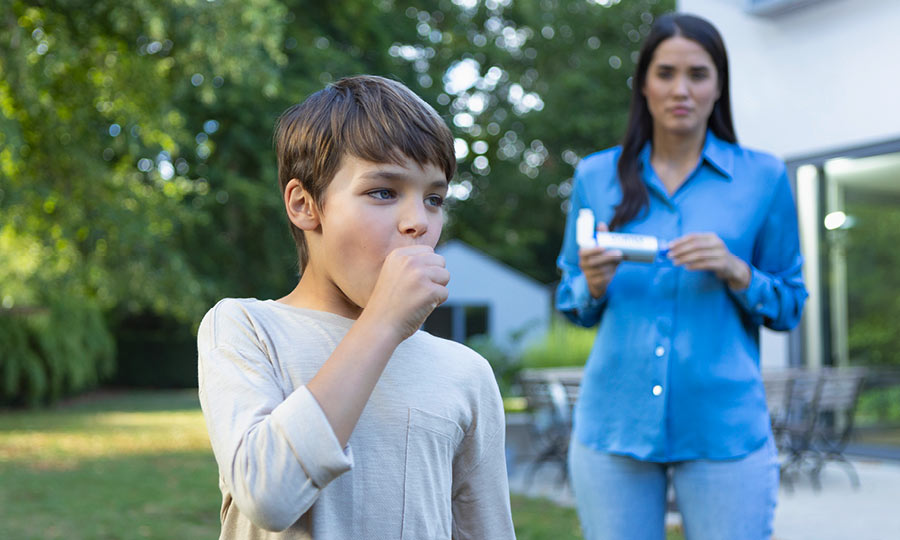Bronchial asthma is a chronic, inflammatory respiratory disease that can severely restrict sufferers. Find out here about the various causes of asthma, how it is treated and what else you can do aside from inhaling medication.
Genetic predisposition and environmental factors such as allergens (allergic asthma), infections (infectious asthma) and chemical substances (occupational asthma) play a role in the development of asthma. With intrinsic asthma, physical exertion or stress (exercise-induced asthma) can trigger an asthma attack. The airways of people with asthma are constantly on the verge of becoming inflamed and so respond much more severely to these irritants than the airways of healthy people.
Asthma typically presents in children in the form of whistling (wheezing) or humming breath sounds. Many other symptoms do not appear until adolescence or adulthood:

Asthma does not automatically get worse, but is subject to fluctuations. Unexpected asthma attacks can occur suddenly during a symptom-free phase. When the symptoms occur and how severe they are depends primarily on the presence of triggers. Most symptoms tend to be worse at night than during the day. Find out why here: Why asthma symptoms are worse in the evening.
It is very important, especially in children, that asthma is diagnosed early so that treatment can be started as early as possible to avoid long-term damage. This is why any child with a wheeze or humming sound when they breathe should always see a doctor, who will then carry out various tests/examinations to make a diagnosis:
The risk factors may vary depending on the type of asthma. Tobacco smoke (active and passive) increases the risk of all types of asthma. The following risk factors can play a role:
It is important to treat asthma as early and as quickly as possible to avoid damage. The aim of the treatment is for the patient to have no symptoms (asymptomatic). If there are no symptoms, the asthma is considered to be “well managed”.
Drug treatment tends to be inhalative, as the active ingredient should reach the lungs directly. Basic drug treatment for asthma in children and adults can essentially be classified as follows:
The goal of the long-term medication is, in consultation with the doctors treating the patient, to find out the exact dosage at which the patient has no symptoms. NB: Do not change the dosage yourself – only do so in consultation with your doctor.
A central pillar of asthma control is to inhale properly, as that is the only way the necessary dose can reach the lungs. With metered-dose aerosols – also called puffers in laypersons' terms – you need to coordinate releasing the spray with breathing in. This is often impossible for younger children, and can also be a challenge for adults. It is therefore recommended that patients use a holding chamber (e.g. VORTEX) when using a metered dose aerosol. Read here to find out more about “the proper inhalation technique for asthma spray”.

Firstly, it is important to avoid anything that has a negative effect on the asthma. First and foremost, you must strictly avoid cigarette smoke (passive and active).
People with asthma benefit from exercise and sport. It is important not to lose confidence. Do not compare yourself or your child to other people without asthma. Speak to your doctor about particular types of sport that suit you or your child.
Depending on the salt content, inhaling saline solutions with a suitable inhalation device can help moisten the airways or release mucus. Interactions between drug therapies for asthma and the inhalation of saline solutions are not to be expected.
The underlying problem with asthma is that the airways are constantly on the verge of becoming inflamed. Because of this propensity to become inflamed, the airways in asthmatic patients respond much more violently to certain stimuli than is necessary. The aim of non-drug treatment for asthma is for the patient to be symptom-free. For this to succeed, first the right dosage is required, and second, the right inhalation technique must be employed. Asthmatics who want to do more can inhale with saline solution.
Contact us
Any questions? You can reach our service center at this number:
+49 8151 279-5220
© 2026 PARI GmbH Spezialisten für effektive Inhalation